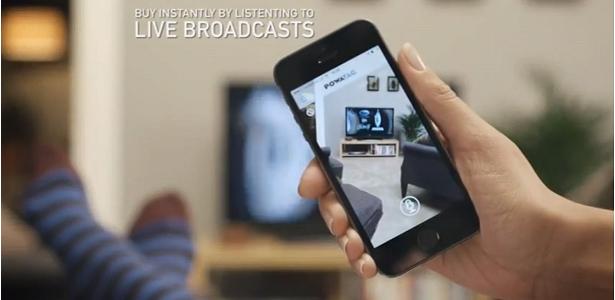
The PowaTag app combines elements of mobile payments, QR Codes and audio recognition to provide an all-in-one solution for brands and retailers to target customers in different physical and online environments and encourage them to buy products right then and there.
After several delays, the firm has now finally unveiled its hybrid technology PowaTag ‘concept’, which chiefly comprises a mobile app which stores users’ payment details.
The PowaTag app will let shoppers buy products by snapping QR codes in print adverts, whether in magazines, on billboards or price tags in stores. Goods are then shipped to their homes.
The firm says that it is also tapping the audio and visual sensors in smartphones to let users buy straight from television, YouTube and radio adverts. The audio solution will be a sound that the average person will not hear.
All of the tags and sounds will in turn trigger the PowaTag app to look up whatever product has been scanned. That will then lead a user through set of screens to let a user buy the product in question. The app will act as a kind of digital wallet at this point: storing payment details so that you do not need to enter them; or linking up with whatever payment solution a particular brand or retailer has chosen to use.
http://www.youtube.com/watch?v=p9VhmPWPzQE&feature=player_embedded&width=500&height=350
The management expect to see PowaTags appearing in magazines and newspapers and other printed matter; on websites; and in stores in the forms of small codes alongside displays of products. Over time, Powa also plans to add Beacons into retail locations and users will be able to, via Bluetooth LE, get alerts in stores for special details just as you pass them; and merchants will be alerted to what you like when you walk into the store.
How does it work
To buy an item using the PowaTag app you must be connected to the internet and then you:
• Scan (using the camera, or tap to activate the microphone) the PowaTag code on the item you want to buy
• Select the product features if applicable (e.g. size or colour)
• Select your default delivery address and payment card or select a different one, and tap ‘Pay Now’.
Languages supported include: Dutch, English, French, German, Italian, Simplified Chinese, Spanish, and Swedish.
Purchases can be made from any merchant displaying a PowaTag code – whether it’s online using a PowaTag QR code (desktop or mobile), in an audio file or on printed material.
The merchant will send a receipt to your registered email address, and the app keeps a purchase history.
Powa charges 25 pence, or 0.1% of the sale value, per transaction.
The company representative said that it’s signed up some 240 brands to the product so far — including large retailers like French-based supermarket giant Carrefour and Universal Music. To coincide with the launch, the app is now live, but Dan Wagner — the CEO and founder, who is also a repeat entrepreneur in the e-commerce space — told techcrunch.com that commercial deployments will only be rolling out gradually over the next couple of months.
Says Wagner, quoted by finextra.com: „Retailers can no longer afford to think in terms of online verses offline – they must seriously rethink how they connect in-store and online strategies to provide the agility and innovation needed to enable customers to buy whenever and wherever they may be, when they are at that critical buying-decision moment.”
Banking 4.0 – „how was the experience for you”
„To be honest I think that Sinaia, your conference, is much better then Davos.”
Many more interesting quotes in the video below: